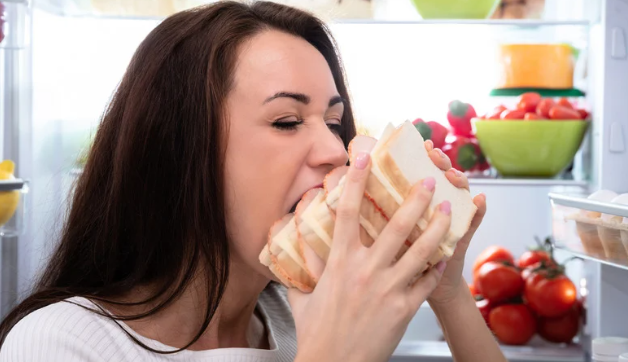Have you ever finished a meal, only to find yourself reaching for a snack an hour later? You’re not alone — and it’s not just about willpower. Constant hunger, even after eating, is often tied to what’s on your plate and how it affects your body on a hormonal and biochemical level.
Let’s look at the science behind persistent hunger and how to fix it with smarter nutrition strategies.
🧠 The Hunger-Fullness System: A Hormonal Balancing Act
Your body has a finely tuned system for managing hunger and fullness, governed largely by a set of hormones:
-
Ghrelin: Known as the “hunger hormone”, ghrelin is secreted by the stomach and signals your brain that it’s time to eat.
-
Leptin: Produced by fat cells, leptin tells your brain when you’re full and helps regulate long-term energy balance.
-
Peptide YY (PYY) and Cholecystokinin (CCK): These hormones are released after eating and promote feelings of fullness.
-
Insulin: Regulates blood sugar and influences hunger through its effects on glucose metabolism and fat storage.
When this system works well, you eat when you’re truly hungry and stop when you’re full. But certain types of meals can throw this delicate balance off.
🍞 Refined Carbs & Blood Sugar Crashes = False Hunger
One of the most common culprits of post-meal hunger is a meal high in refined carbohydrates and low in protein, fibre, and fat.
When you consume foods like white bread, pastries, or sugary cereals, your blood sugar spikes rapidly. In response, your pancreas releases insulin to shuttle glucose into your cells. Sometimes, the insulin response overshoots, causing your blood sugar to drop quickly — a phenomenon known as reactive hypoglycaemia. This crash can trigger hunger just an hour or two after eating.
🔬 Research Spotlight:
A 2013 study published in The American Journal of Clinical Nutrition found that high-glycaemic meals caused a significant drop in blood glucose and an increase in hunger and brain activity in reward-related areas just a few hours later. (Ludwig et al., 2013)
🥩 Protein: The Most Satiating Macronutrient
Protein helps regulate hunger hormones, particularly by lowering ghrelin and increasing satiety-promoting peptides like PYY and GLP-1. It also slows digestion, keeping you fuller for longer.
🔬 Evidence:
A meta-analysis in Obesity Reviews (Westerterp-Plantenga et al., 2009) found that increasing protein intake to 25–30% of daily energy significantly enhanced satiety, decreased total energy intake, and supported better weight regulation.
🥦 Fibre: The Unsung Hero of Fullness
Fibre, particularly soluble fibre, expands in your stomach, slows digestion, and supports the production of gut hormones that tell your brain you’re full. Healthy adults should consume 30g of fibre daily.
🔬 Evidence:
Research from The Journal of Nutrition (Howarth et al., 2001) demonstrated that higher fibre intake reduced appetite and food consumption at subsequent meals.
🥑 Healthy Fats: Often Feared, But Essential for Satiety
Fats delay gastric emptying and stimulate the release of CCK, which signals fullness. While excess fat can be energy-dense, leading to weight gain, moderate, high-quality fats (like olive oil and nuts) improve meal satisfaction and support hormone regulation.
✅ How to Build an Easy, Fresh, Hunger-Busting Plate
Use this science to your advantage with meals that are:
-
High in protein (20–30g per meal)
-
Rich in fibre (8–10g per meal)
-
Contain healthy fats
-
Low in refined sugar and processed carbs
🍽️ Try This: High-Protein, High-Fibre Mediterranean Bowl (25g Protein, 10g Fibre)
Ingredients (serves 1):
-
90g cooked quinoa (½ cup) – 4g protein, 3g fibre
-
100g cooked chickpeas (about ½ tin) – 7g protein, 6g fibre
-
1 medium boiled egg – 6g protein
-
½ medium avocado – 2g protein, 5g fibre, healthy fats
-
50g chopped cucumber
-
50g cherry tomatoes
-
2 tbsp (30g) plain Greek yoghurt (unsweetened, 2% fat) – 3g protein
-
1 tsp olive oil – healthy fats
-
Sprinkle of sesame seeds or sunflower seeds (optional) – 2–3g protein
-
Salt, pepper, and a squeeze of lemon juice
Method:
-
Cook the quinoa according to package instructions and let it cool slightly.
-
Arrange it in a bowl with chickpeas, sliced boiled egg, chopped veg, and avocado.
-
Drizzle with olive oil, a dollop of yoghurt, and lemon juice.
-
Sprinkle with seeds for crunch and extra protein.
💡 This balanced bowl hits our targets:
✔️ ~25g protein
✔️ ~10g fibre
✔️ Healthy fats
✔️ Low glycaemic load
🧠 Final Thought: It’s Not All About Willpower — It’s Biology
If you’re constantly hungry, it’s not a character flaw. It’s likely your meals aren’t sending the right hormonal signals. Focus on structure, not restriction. Build meals around protein, fibre, and healthy fats — and you’ll help your body naturally find balance, energy, and fullness.
Yours truly,
Corinne




